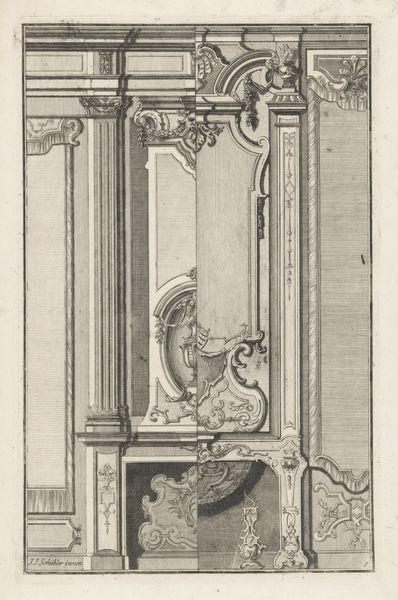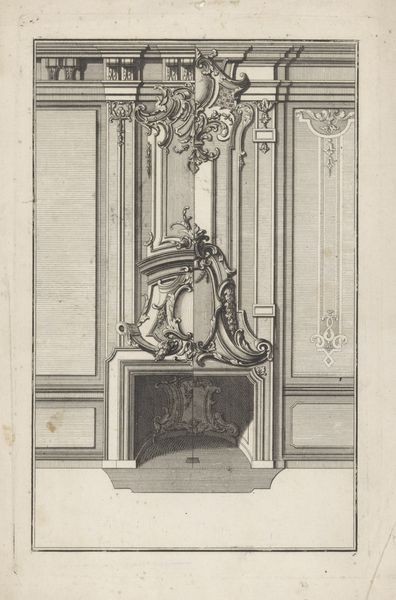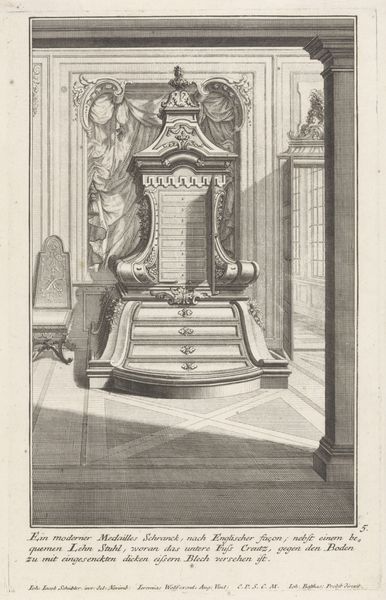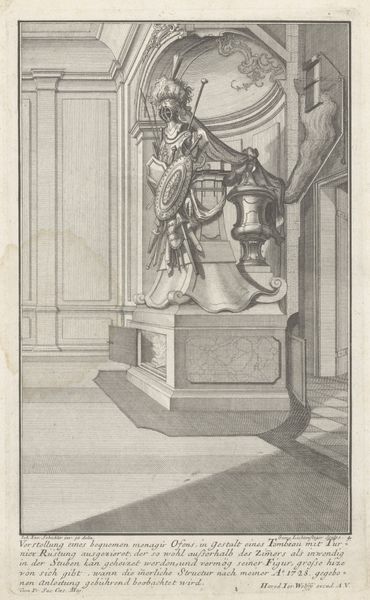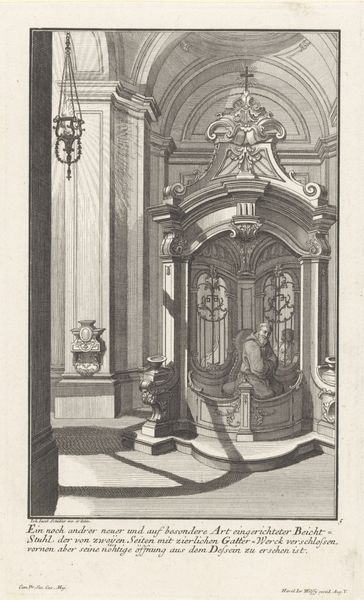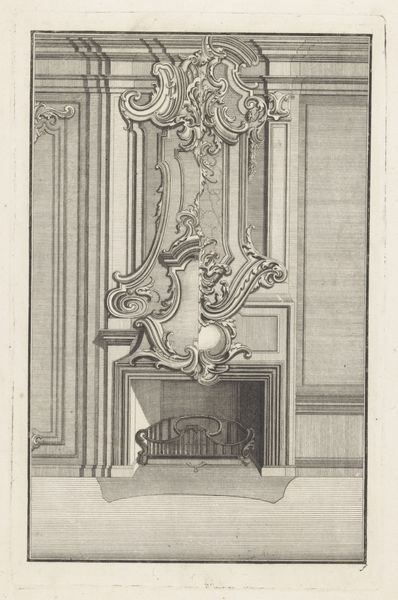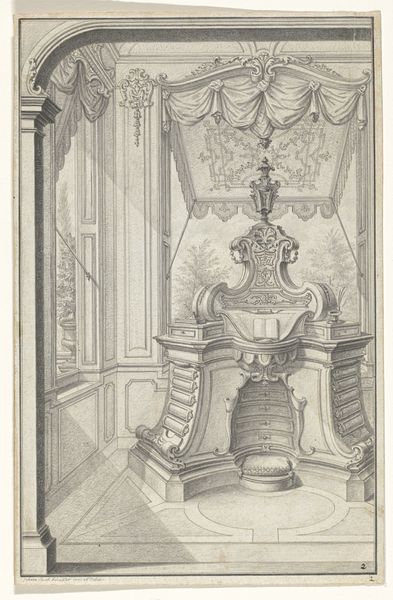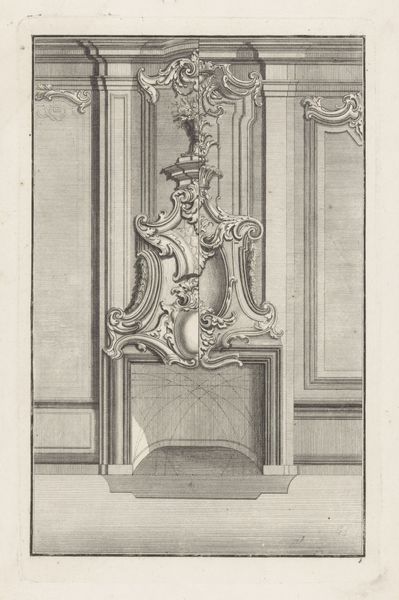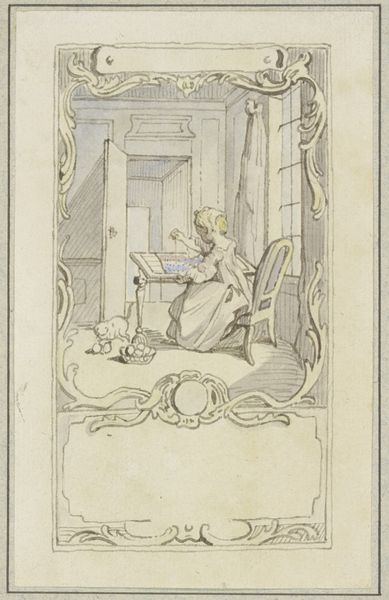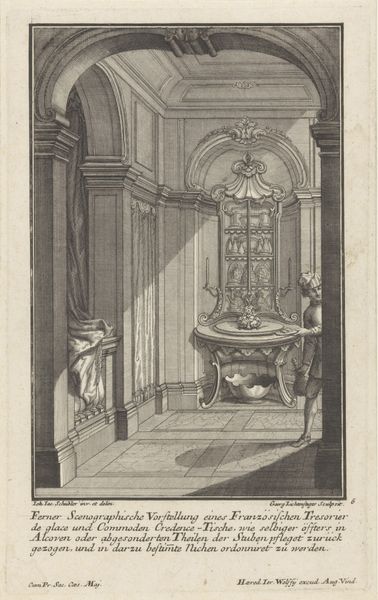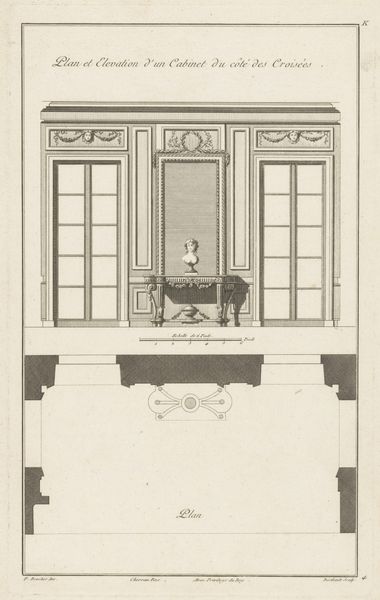
print, engraving, architecture
#
baroque
# print
#
form
#
line
#
decorative-art
#
engraving
#
architecture
Dimensions: height 285 mm, width 186 mm
Copyright: Rijks Museum: Open Domain
Curator: This print from the Rijksmuseum depicts a richly decorated chimneypiece. The title, "Geornamenteerde schouw met cartouche," translates to "Ornamented Mantelpiece with Cartouche." It's an engraving made anonymously sometime between 1726 and 1741. Editor: Immediately, what strikes me is its baroque flamboyance. It exudes power, privilege – a sort of architectural overcompensation! All those swirling forms crammed in there. Curator: Indeed, that Baroque exuberance served very specific socio-political functions. Think about the symbolic weight of the hearth: It was the focal point of the home, representing wealth, status, and patriarchal power. This mantelpiece visually reinforced those hierarchies within domestic spaces. Editor: But did these grandiose designs trickle down into more ordinary homes, creating aspirational desires and normalizing displays of dominance even among the middle class? I imagine the politics of interior design permeated society quite deeply. Curator: Absolutely. And let's consider the "cartouche" – that oval or scroll-like frame. These often contained coats of arms, family crests, or symbolic images, acting as very public statements of lineage and personal identity. Think about how these designs were used in domestic environments and were also exported to influence broader architectural styles during an era of intense cultural exchange. Editor: So, even something as seemingly functional as a fireplace was laden with ideological meaning. It raises questions about who had access to these spaces, whose stories were deemed important enough to immortalize in stone or, in this case, engraving, and whose labor enabled all this ostentation. This form, like the form of much historical architecture, implies the structural subjugation of particular demographics in 18th century society. Curator: Precisely. Even in a relatively "minor" artwork like this, we can excavate these complex histories of power and representation. It really challenges us to think critically about how taste and aesthetics can be intertwined with politics and class. Editor: It shifts our perspective, doesn’t it? Looking at art like this transforms seemingly simple decorative motifs into powerful statements about society’s foundational, and still persistent, inequalities.
Comments
No comments
Be the first to comment and join the conversation on the ultimate creative platform.
